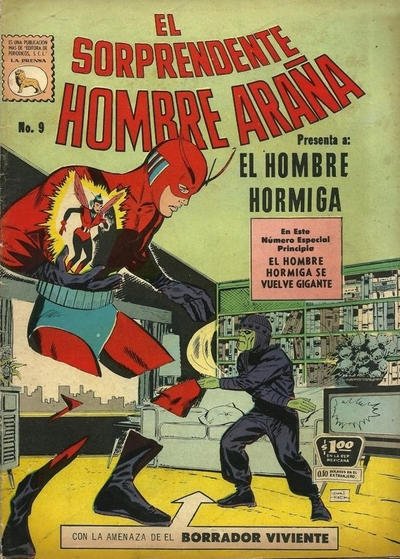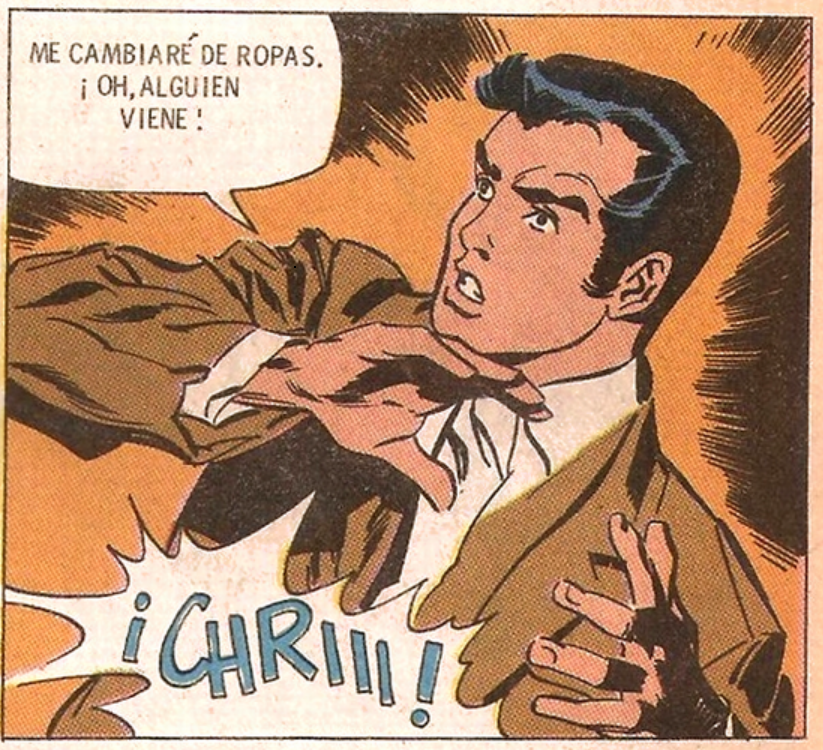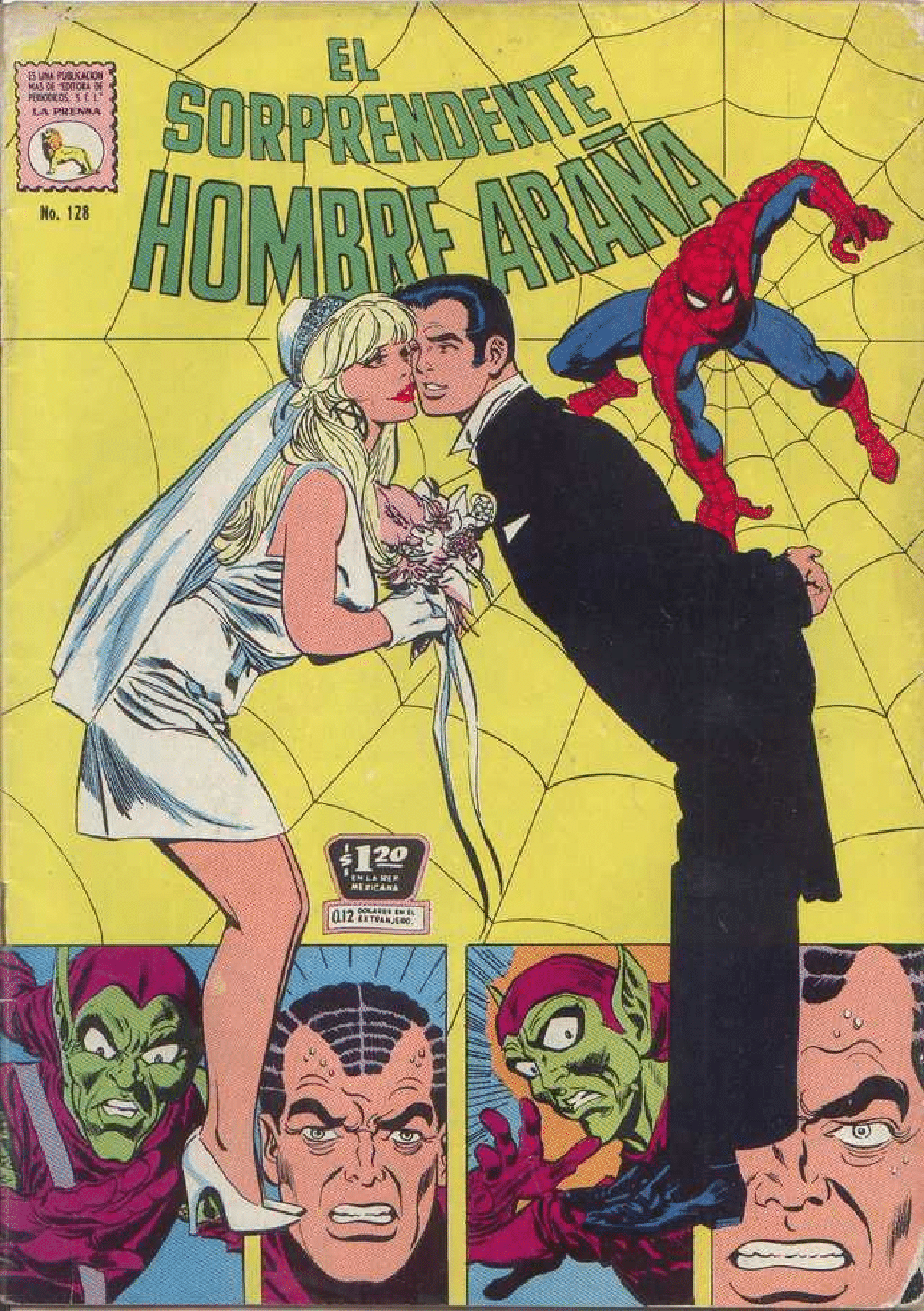The Legend of Mexican Spider-Man // Comics 101
Much that once was is lost, for none now live who remember it.
It began with Comic Book Resources. Articles were published to give fans knowledge about their favorite incarnations of heroic legends. Speculation was provided to those who desired to imagine. Reviews were given, for it was easier to judge the worthiness of comics. Tales told of a Mexican Spider-Man who married Gwen Stacy were spread, revealing how another country carried on with Marvel’s legendary Wall-Crawler.
But their readers were all misled, for a lack of research had been done. The reality of the comics was actually quite different, but the article was taken as fact.
But then something happened that CBR did not intend. Scans of the comics were picked up by the most unlikely creature imaginable: a comic fan, Brandon Masters of You Don’t Read Comics.
And the time will come when the truth of Mexican Spider-Man will be shared with all.
And now that we’ve journeyed outside my butt, this is going to be one weird rabbit hole to fall down. It began with the usual rounds on Twitter, where the comics fandom once again rediscovered an artist who had a flair for enhancing certain features of Spider-Man cast member Gwen Stacy.
As it turns out, these images actually could not be sourced to an American comic book. Instead, it belonged to a Mexican-published Spider-Man comic, one that was allegedly officially licensed by Marvel Comics! These were original stories, and the numbering of this Mexican comic stretched past Amazing Spider-Man 121, which is when Gwen had passed on.
This once more fueled a bunch of fan theories as to why the Mexican version of Gwen Stacy survived while her American incarnation did not. And her United Kingdom version also did not. And the Canadian version. You get the idea. I, too, wanted to see this alternate take on 1970s Marvel Comics, and what I found was genuinely astounding.
As it turns out, Marvel has been giving the license out to many companies in Mexico over the years. La Prensa is the company, however, we will need to focus on. From their earliest days, Marvel founder Martin Goodman seemed to have an eye for making money. International sales were a thing in many countries, and international printing of Marvel comics can run quite the price on the United States’ secondary market for novelty value alone.
Covers like this were sourced from the Grand Comics Database.
Starting June 30th of 1963, just three months after his premier solo comic was published in March of 1963, the antics of Peter Parker: Spider-Man were splashed across pages in Mexico. The license was granted to publisher La Prensa, and it appears to be this very La Prensa that my research has found. The publication ran until October of 1973, with issue 185 being the last. La Prensa mostly ran reprints from The Amazing Spider-Man under the translated title of El Sorprendente Hombre Araña. Amusingly, this can also translate to The Surprising Spider-Man, which is what I will be using for the Mexican-published incarnation of Spider-Man to try and lessen the incoming confusion.
However, the key points there are “mostly” and “October of 1973.”
Before we begin my weird dive, it needs to be said that this article will be a combination of research and guesswork. We Americans don’t seem to be as thorough with documenting the culture of Mexico as we seem to be with, say, Japan. I’m going to call that a failure on our part here since there is just as rich a culture as Japan hiding just “below” us on the map.
La Prensa, from what I can dig up on other American comic data websites, held the Marvel Comics license as a whole at the time. This means we had comics published involving Agente Internacional (Nick Fury: Agent of S.H.I.E.L.D.), Diabolico (Daredevil), El Sargento Furia y Sus Comandos (Sgt. Fury and the Howling Commandos), Los 4 Fantásticos (the Fantastic Four), Los Hombres X (the X-Men), and so on. The translations also seem to be solid for the day, but the scans of early Spider-Man comics have some hilariously weird deviations.
For one, they didn’t always feature Spider-Man!
Hilariously, the adventures of El Hombre Hormiga and El Gigante were still under the Hombre Araña title…
Nearly all of Marvel’s comic offerings in the early 1960s were shipped bi-monthly, meaning that The Surprising Spider-Man comics were being printed much faster than they were being received from Marvel HQ. To fill up space and keep selling a comic monthly, La Prensa looks to have used Tales to Astonish adventures of Ant-Man and the Wasp to keep up their readers’ interest. This began with Surprising Spider-Man issue 9, which reprinted Tales to Astonish issue 49. In that issue, Hank Pym and the Wasp took down the Living Eraser, and it was the introduction of Hank’s time as Giant-Man.
It’s amusing they would launch with that comic, as later diversions from the main Spider-Man comics would use comics from before then. This brings us to another issue with La Prensa’s comic run:
The comics weren’t always printed in the right order!
Issue 11 of Surprising Spider-Man would reprint Tales to Astonish issue 40, and each “gap month” after Marvel eventually went monthly would involve another Tales to Astonish adventure with Hank Pym taking over for a while. This meant the numbering really began to skew wildly, with issue 13 of Amazing, which introduced regular foe Mysterio, becoming issue 18 of Surprising. This back and forth finally ended with issue 45 of Surprising, with a translation of Amazing Spider-Man issue 25’s Captured by J. Jonah Jameson.
With the sizing of the text box, it looks like they were provided finished pages, which they then edited over. It’s kinda trippy, but they made it work.
On top of that, not all the comics starring Spider-Man in the book known as Spider-Man were actually published either… or if they were, they might have been in the wrong order. From the complete list of covers I’ve found, Surprising would publish Amazing issues 34 and 36 prior to issue 33, creating a most bizarre case where Spider-Man is left with the threat of drowning at the end of the story with Aunt May dying… only to go on and fight two different dudes while Aunt May is perfectly fine, but then he’s back in the same spot he was in two months ago with a dying aunt!
I knew Spidey’s life was miserable, but this really helps take the cake.
I have found some scans of this era of publication. So far as I can tell, the comics are solid when it comes to translation. I admit to having only rudimentary middle-school Spanish knowledge at the best of times, but the internet has oddly helped in that regard. Some names have been changed for translation and localization. For example, The Sandman is now El Arenero… which still translates to Sandman, but also carries the meaning that it could be his job title rather than name. Daredevil is Diabolico, which is just Diabolical in English but could also be The Devil. The Molten Man became The Metal Man as well. But most names translate right back to their equivalent in English.
The Shocker really lucked out, getting named Earthquake.
Source: The Surprising Spider-Man 65: The Sinister Earthquake.
It also means that the comic began to drop a few issues here and there, potentially if they had a troublesome story beat or villain for local publishing standards. However, it should be commended that La Prensa did publish the then-controversial Amazing Spider-Man issues 96-98, where Harry Osborn nearly died of a drug overdose. I don’t have those issues at hand, however, so I do not know how well they translated… but we’re looking at 115 to 117 in the run of Surprising.
Now, La Prensa is also legendary in fan-circles for just… going off on their own and making new comics. This is certainly true, but the specific reasoning is actually unknown. The CBR article we mentioned claims that they reprinted the tale of Gwen Stacy’s death but removed the snap sound effect and had her survive. The problem is, the comics never quite got that close before La Prensa split themselves from reprinting Amazing Spider-Man. However, there also lies one hell of a coincidence.
The final issue of translated American content for Surprising Spider-Man was issue 121, the same issue as Gwen Stacy’s death in Amazing Spider-Man! However, this wasn’t the same story published.
Eagle-eyed fans will notice this is actually Amazing Spider-Man issue 102, which puts us 19 issues behind the death of Gwen Stacy. While we are missing a cover of Surprising 122, we can look at 123 and see…
…completely original art. This means that La Prensa had chosen to break free from translating Spider-Man stories and instead began to make their own. I’ve not been able to find interviews with anyone from La Prensa, or even much to the credits of who made these comics. Most guesses place the primary artist as José Luis Durán, with several issues by Roberto Avila… but no issue actually credits a single creator.
These new and original comics seem to be unique to Spider-Man as well, as we’ve yet to hear tales about a Los Hombres X series where they kept getting new adventures despite their book from Marvel USA getting sent into endless reprints for years. I’ve got 19 issues from this era, and I’ve only just started to get a peek inside. Some of these new stories are pretty in line with Marvel’s Bronze Age output, and others are just off-the-wall insanity.
One thing worthy of noting, however, is that the characters are presented as a slightly different nationality at times. If the artists could sneak it in, characters with brown hair and red hair would be adjusted to have black hair. This might have been done to bring Peter and his friends closer to what the average kid in Mexico would see on the streets.
This is Peter Parker now!
Source: The Surprising Spider-Man 137: Satanica.
While I plan to cover all of the issues I’ve uncovered eventually, we’re looking at the most notorious one: The Surprising Spider-Man issue 128, el Casamiento de Peter Parker. This roughly translates to… The Wedding of Peter Parker.
No amount of hair color can change how unique Norman Osborn’s fade looks.
Yes, this very issue caused this whole cross-country miscommunication! While we will have an article looking deeper into the actual truth of the comic soon, a glance through the issue shows plainly what is happening to most readers. A page midway through the comic’s adventure, focusing on the Green Goblin kidnapping Aunt May, has Gwen in a commercial airliner. Next to her is Uncle Arthur Stacy… unless there’s another one we don’t know about.
This means Gwen is alive and well, certainly. The fact that Norman Osborn is alive also means that we didn’t have the events of Amazing Spider-Man 121 happen in these comics. Later on in the issue, Peter has some kind of dream state where he imagines being married to Gwen.
And ol’ breakdancing somnambulist Peter Parker continues this theme one page later, with him screaming out about Gwen.
Apparently, this freaks the Green Goblin out, as he just… lies down and faints to end his threat for the story. I’m gonna have to dive into this book with a translator because I want to specifically know what’s going on in this comic.
But the real question is this: why did La Prensa begin to make new comics about Spider-Man? I have a sneaking suspicion: their target audience.
Comic books at this time in the United States were almost always considered kiddie material, and it’s likely the same would apply to Mexico as it did to Japan and the United Kingdom around this time as well. While Harry Osborn getting strung out on uppers only to realize his error could be a good story about the dangers of drug abuse, what about the sudden and instant death of a beloved character, a girlfriend of Spider-Man no less?
That might have been a little too much for what La Prensa’s editors considered their target demographic. From what I’ve seen, while these newer comics are filled with wild adventures and explosions and fights… and rather voluptuous ladies… they all also make sure no one explicitly dies onscreen. The language they use is also a lot simpler than what I would expect, almost akin to Spidey Super Stories in some cases.
Of course, Gwen Stacy didn’t die until June 1973, and these La Prensa comics were all published between 1971 and 1973. This means all 62 comics La Prensa published were possibly done weekly. To get this quality of art on a weekly basis is insane for a comic in America and worth praise.
As for Gwen, she would still live on. Issue 154 of Surprising would feature her, Peter, and the cast of the Daily Bugle going south of the border to look for a lost civilization. I’m not entirely sure why JJJ took everyone on a vacation, but it makes for some unique content and is the source of the issue with Gwen in the remarkably tight red pants. Issue 180 is the last issue of the run I was able to find, but it also features Gwen rather strongly in the center with Peter in a romantic scene or two.
However, La Prensa would lose the license in 1973. The year Gwen Stacy actually died. It’s truly unknown if Marvel was displeased with the original stories they allegedly ok’d or if the new rights holder OEPSIA paid Marvel more money. However, OEPSIA just did straight-up reprints of those USA-made Marvel Comics.
Which also explains this…
This is a comic with the same title, yes. And yes, it does have the death of Gwen Stacy. However, OEPSIA did not continue the same storyline La Prensa had crafted, instead publishing comics with a straight translation from the US branch of Marvel. They also slapped their own banner on top of each comic, which is why the comic doesn’t look the same as the ones from La Prensa.
So while Gwen Stacy did eventually die in Mexico, it wasn’t the original one created by a bunch of mad lads at La Prensa with too much time on their hands. It’s a shame that we don’t have a complete collection, and it’s a damned shame we don’t have these comics in English, but it’s nice to know there’s a world where Peter and Gwen are still dating without absurdly convoluted clone stories.















